- HOME >
- New Arrival at HOJO Online Shop
Introducing 3 Varieties of Phoenix Dancong Oolong Tea
- [2023.05.25] Posted By Akira Hojo

We have released new types of Phoenix Dan Cong Oolong Tea that are finished with more rounds of roasting with traditional charcoal fire by skilled tea master. In Phoenix, the locals called it Nong Xiang style, meaning that tea is giving more intense matured flavor.
Nong Xiang tea refers to tea that has been roasted multiple times to promote aging and produce a sweet/dried fruity aroma.
https://shop.hojotea.com.my/collections/phoenix-oolong-tea
What is charcoal roasting by skilled tea artisans?
Roasted tea is a common type of tea in China and Taiwan, but it is crucial to ensure that it is not burnt. Recently, some tea producers from regions like Wuyi Mountain have started using high temperatures to burn the surface of the tea leaves once or twice, a process known as “charcoal roasting.”
When tea is roasted at a certain temperature, its components are oxidized and burned at the same time. If tea is roasted at high temperatures, it loses its unique flavor and instead takes on a burnt smell.
Therefore, it is important to roast tea at a lower temperature to prevent it from burning. However, low-temperature roasting results in slow changes in the tea’s aroma with each roast. This means that repeated roasting is necessary to transform the tea into a mature, sweet aroma. However, this process can only be successful if the tea leaves are rich in substances that can withstand repeated roasting and produce a rich aroma.
Phoenix Lao Cong Shui Xian Nong Xiang 2021

When it comes to Phoenix oolong tea, those with a strong fragrance are classified as “Dan Cong,” while those with a more subtle aroma influenced by factors like the age of the tea tree and the weather conditions during processing are referred to as “Lang cai” (浪菜) or “Shui Xian.” At HOJO, we carefully select and offer teas made from seed-grown tea bushes that are 80 years old or older.
What distinguishes Phoenix Shui Xian is its extraordinarily prolonged aftertaste, which is not commonly found in teas of comparable price and quality.
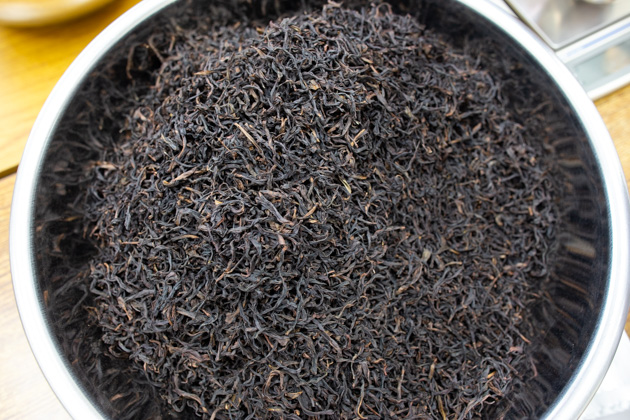
Interestingly, this Shui Xian undergoes a finishing process known as “Si Ci Huo,” which involves four rounds of charcoal roasting. Each round of roasting takes several months of aging to redistribute moisture of the tealeaf, and the entire process takes more than a year to complete.
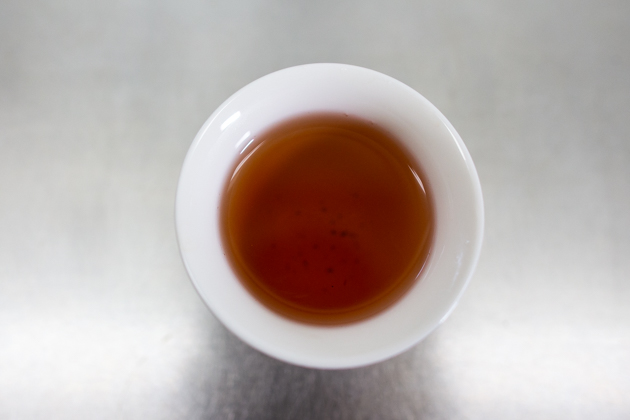
The result of this painstaking roasting process is a unique, sweet aroma that reminds one of dried fruit, caramel, and whiskey.
Phoenix Dan Cong Lao Cong Ji Long Kan Nong Xiang Type (Thick Flavor) 2021

Ji Long Kan is a very famous tea tree, and the mother tree still exists today in Phoenix Mountain. It is said that it was named after its shape resembling a chicken coop.

The mother tree of Ji Long Kan
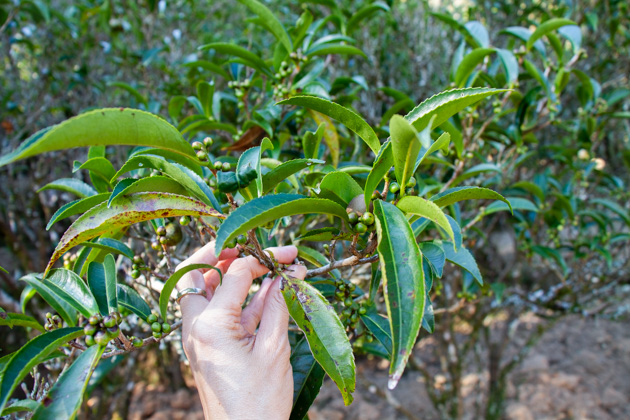
Like Shui Xian, this tea is made with four rounds of roasting. It takes a year to complete the four rounds of charcoal roasting, resulting in a unique and richly aromatic tea.
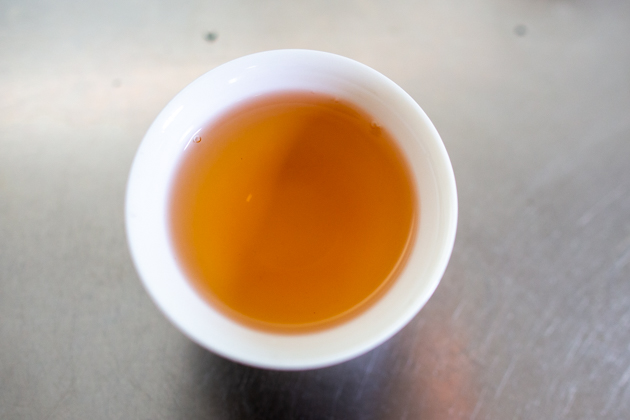
To prevent the tea from burning, it is carefully roasted at a low temperature, resulting in an aroma reminiscent of canelé, dried plums, dried apricots, dried dates, and whiskey.
Due to its strong aroma, it is especially delicious in cold weather.
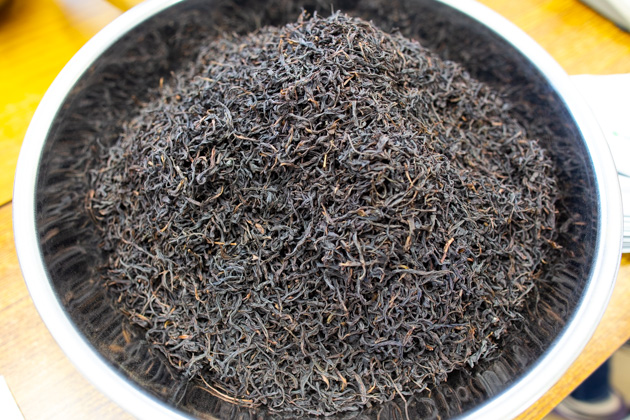
The tea comes from Dong Jiao Village (烏崠山脈頂東郊村) in the Wu Dong Mountain, with an altitude of 700-800m and trees age of around 60 years. It is classified as a Zhi Lan Xiang Type (Orchid Aroma Type) tea.
Phoenix Lao Cong Dong Fang Hong 2022
Dong Fang Hong is a renowned tea, known for being a tribute tea to Mao Zedong. It is also the title of a song that praises Mao Zedong and the Communist Party. During the Cultural Revolution, it was considered the unofficial national anthem and became closely associated with Mao Zedong and the Chinese Communist Party. While the mother tree of this tea no longer exists, it held great significance and symbolized the Wu Dong Mountains. I have personally visited this area multiple times and captured photographs of it.


Taken in 2013: The mother tree of Dong Fang Hong, which was vibrant and healthy at the time.
The tea from the mother tree of Dong Fang Hong had a period of high demand and steep price increases. In 2017, it reached an astonishing price of 2 million yuan for 500 grams.
However, around 2018, the Dong Fang Hong tree unexpectedly perished.
The existing Dong Fang Hong tea that is currently available is obtained through grafting from the original mother tree. Dong Fang Hong is a rare variety, particularly when it comes to old trees.
Our product consists of tea leaves harvested from trees grown in Gui Zhu Hu Village, Wu Dong Mountain, at an elevation of approximately 1100 meters. These trees have an approximate age of 80 years.
When grafting onto an old tree, it typically takes around 8 years for the scion and rootstock to merge, resulting in a flavor that closely resembles that of the original old tree.
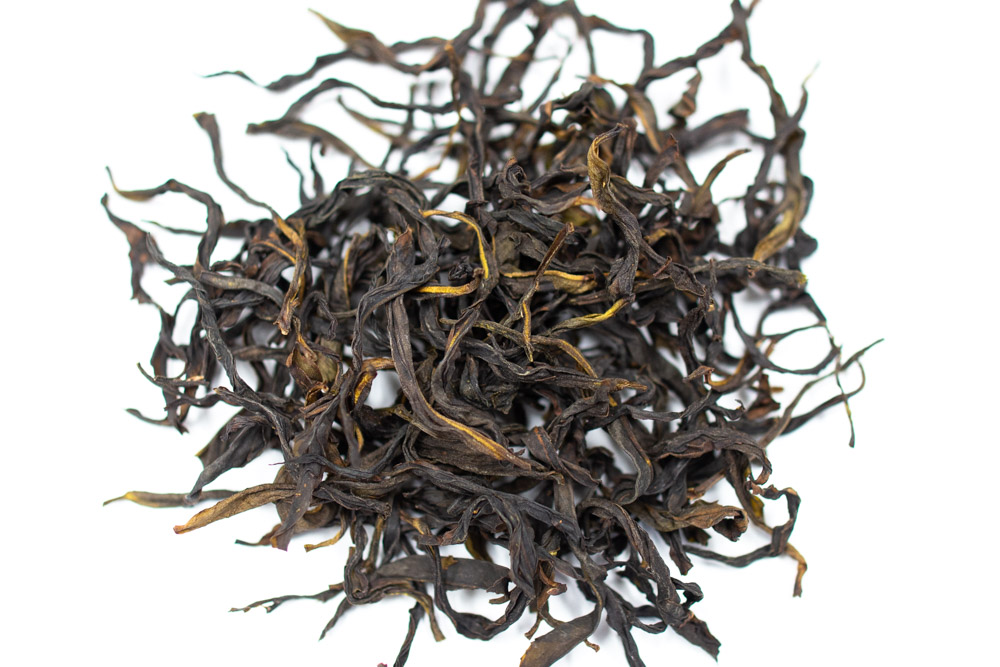
The tea maker employs a meticulous two-step roasting method that involves two rounds of charcoal roasting, spanning several months to complete the entire process. This careful approach yields a harmonious fusion of robust and delicate aromas. Instead of fruity undertones, this tea presents a distinctive floral fragrance reminiscent of gardenia, magnolia, and lily flowers.
Related Articles
How to get the latest update on HOJO Tea?
1. Follow Twitter, 2. Click "Like" on Facebook, and 3. Subscribe in newsletter. You can have the latest tea news from HOJO Tea.
 Subscribe the Newsletter to enjoy the privileges
Subscribe the Newsletter to enjoy the privileges- You may receive a free sample upon purchase, or you may have the priority to purchase special products. So please remember to subscribe our newsletter as well as the social network.
- New Release of High Mountain White Tea
- We are pleased to introduce our High Mountain White Tea, sourced from a unique tea garden with two key features: 1. Located at an altitude of 2200-2300m2. Completely wild and untended The ideal natural conditions of this garden result in tea of exceptional quality, offering a pure and gentle, nourishing taste. High Altitude and Wild …
- New Release of Da Xue Shan Wild White Tea 2024
- We have released the 2024 Da Xue Shan Wild White Tea Loose Leaf. This tea was produced under our direct supervision during our stay in Yunnan Province, ensuring meticulous production management on site. Definition of Wild Tea in Yunnan Province People in Yunnan strongly associate Camellia taliensis with wild tea, regardless of where it is …
NEW ARTICLES
 Why Do Some Teas Taste Astringent? Exploring the Causes and Mechanisms of Astringency
Why Do Some Teas Taste Astringent? Exploring the Causes and Mechanisms of Astringency- Tea can range from having no noticeable astringency to possessing a very strong one. What causes this astringency? This article explores the causes and mechanisms behind astringency in tea. Causes of Astringency Astringency arises from the binding of tea components to proteins in the oral cavity, creating a sensation of tightness or dryness. The tongue …
 The Impact of Heat Sources on Tea Flavor
The Impact of Heat Sources on Tea Flavor- It is widely recognized that the material of a kettle plays an important role in shaping the taste of water for brewing tea. Yet, an often overlooked but equally significant factor is the type of heat source used to boil the water. Different heat sources, whether gas, electric, charcoal, or wood fire, can impart distinct …
 New Release of High Mountain White Tea
New Release of High Mountain White Tea- We are pleased to introduce our High Mountain White Tea, sourced from a unique tea garden with two key features: 1. Located at an altitude of 2200-2300m2. Completely wild and untended The ideal natural conditions of this garden result in tea of exceptional quality, offering a pure and gentle, nourishing taste. High Altitude and Wild …
 New Release of Da Xue Shan Wild White Tea 2024
New Release of Da Xue Shan Wild White Tea 2024- We have released the 2024 Da Xue Shan Wild White Tea Loose Leaf. This tea was produced under our direct supervision during our stay in Yunnan Province, ensuring meticulous production management on site. Definition of Wild Tea in Yunnan Province People in Yunnan strongly associate Camellia taliensis with wild tea, regardless of where it is …
 New Release of Wild Pu-erh Jasmine Pearl
New Release of Wild Pu-erh Jasmine Pearl- Out of curiosity, we decided to create a jasmine tea based on Da Xue Shan Wild Raw Tea. This resulted in an exceptionally rare tea, not only in Japan but also in China. Custom Production Network for Jasmine Tea At our store, we source various types of base teas from different regions during the spring. …
 2024 Overview: Our Yunnan White Tea Quality, Process, and Weather Insights
2024 Overview: Our Yunnan White Tea Quality, Process, and Weather Insights- One of the teas we’ve been focusing on in Yunnan Province is white tea. Historically white tea has been produced in both Fujian Province and Yunnan Province for a long time. While white tea from Fujian Province is well-managed during processing, we are dissatisfied with the quality of the raw materials due to the use …
 Yunnan’s Hospitality Culture: Expressed Through Meals
Yunnan’s Hospitality Culture: Expressed Through Meals- In China, as a form of greeting, it’s common to say “你吃饭了吗?” which means “Have you eaten?” However, in Yunnan Province, the phrase “吃饭” is often used in various situations, more like “Eat, eat,” serving as an invitation to share a meal. Yet, with prolonged exposure to Yunnan, one comes to understand that these meal …
 In Search of Wild Tea: Exploring Mountain Villages in Southwest Lincang, Yunnan
In Search of Wild Tea: Exploring Mountain Villages in Southwest Lincang, Yunnan- We are currently sourcing tea in the southwestern part of Lincang City, Yunnan Province. One of the crucial products for us is wild tea. While tea processing is important, securing the raw materials poses the biggest challenge. Recently, we received information about a new location where wild tea supposedly grows. To verify this, we visited …
 New Release of Anxi Traditional Oolong
New Release of Anxi Traditional Oolong- Anxi, located in Fujian province, China, is celebrated for its Tie Guan Yin tea. However, the Traditional Anxi Oolong from this region boasts a unique fruity aroma, distinguishing it from Tie Guan Yin. Anxi: A Renowned Hub for Oolong Tea Production in China Fujian Province, renowned for its rich tea heritage, boasts several prominent tea-producing …
 Yunnan 2024 Spring Tea Sourcing
Yunnan 2024 Spring Tea Sourcing- Yunnan Province is globally renowned for the exceptional quality of its tea leaves. However, lax production management often presents challenges in achieving the desired tea quality when relying solely on pre-made teas. To address this issue, we have committed to remaining on-site throughout the spring season to closely monitor tea production. We are meticulously inspecting …
Shop Info

Address:Lot No. T-215, 3rd Floor, The Gardens Mall, Mid Valley City, Lingkaran Syed Putra, 59200 Kuala Lumpur
Tel: +603-2287-4537
Business Hour: 10am to 10pm
Category
- New Arrival at HOJO Online Shop
- Featured Articles
- Newsletter
- Types of Tea
- Origin of Tea
- Teapot and Tea Equipment
- Tea Column
- How to enjoy tea
- Tea Processing
- How to choose quality tea
- Tea constituents and functional effect
- Safety of Tea
- Foods
- Tea Business Operation
- Hobby and Outdoor Activity
- Ranking of Tea
- Video
- FAQ
- Media Release
Profile

- AKIRA HOJO
- I invite you to experience my tea selections.I was born in Nagano, Japan. In university, I studied agricultural chemistry, and I have the master degree in food science. I worked in Japanese food industry for 10 years. I involved in R&D, QC and QA. As a factory manager, I implemented ISO9000 series and managed the factory.
- The Art of Tea Magazine
- We posted the article on “The Art of Tea Magazine No.9, the magazine is published in Taiwan. We featured some scientific view about the tetsubin
- New Straits Times
- The Malaysian National Newspaper, New Straits Times featured HOJO Tea on 17-Oct-2007.















